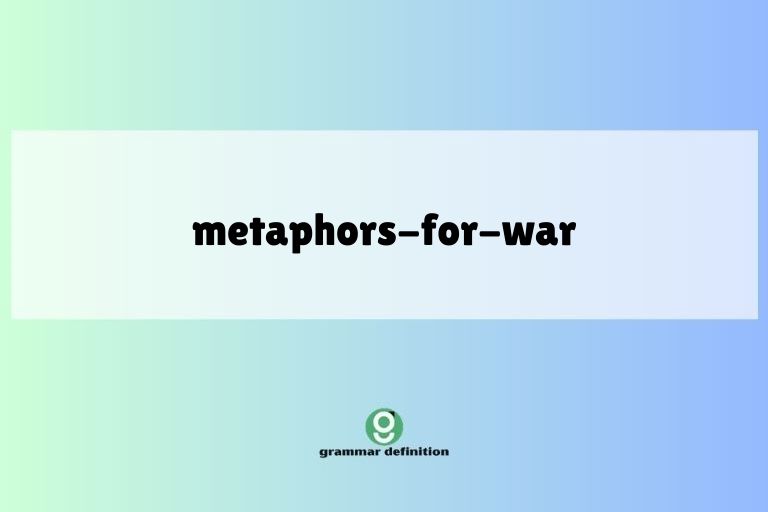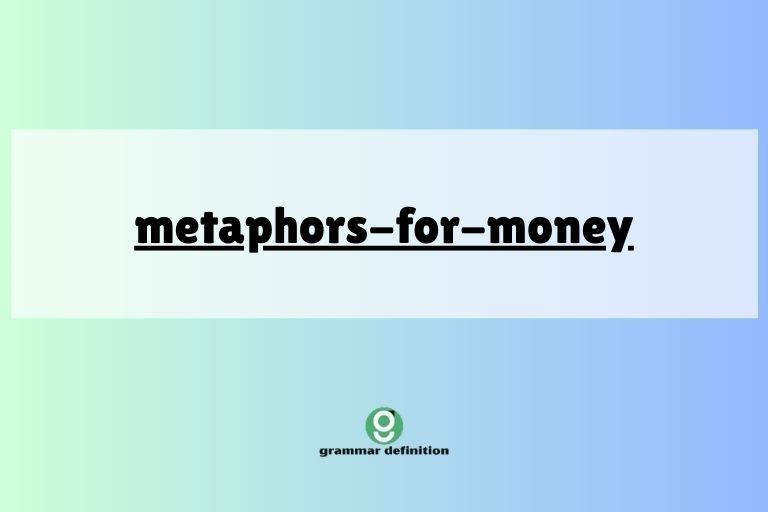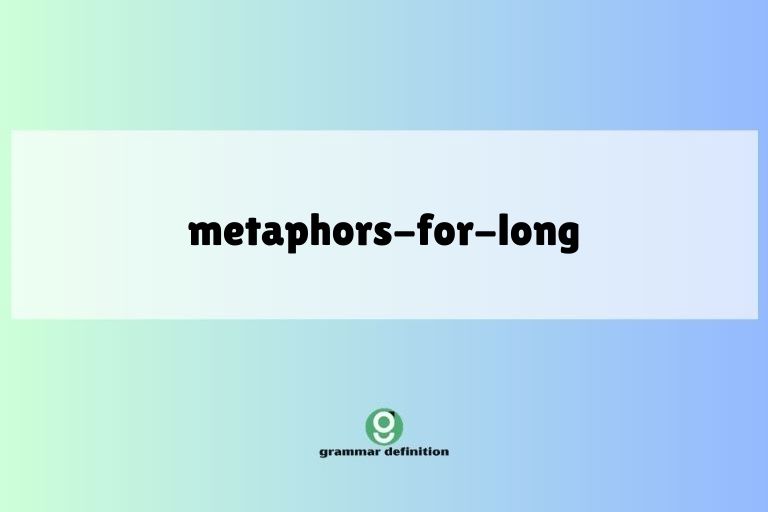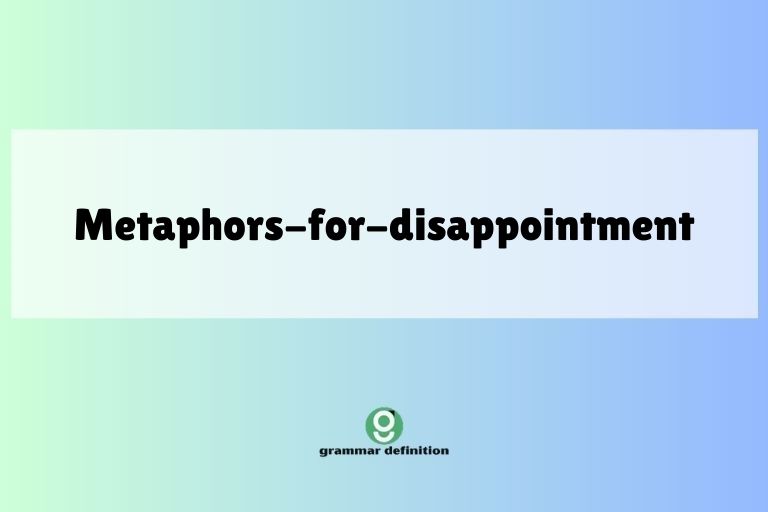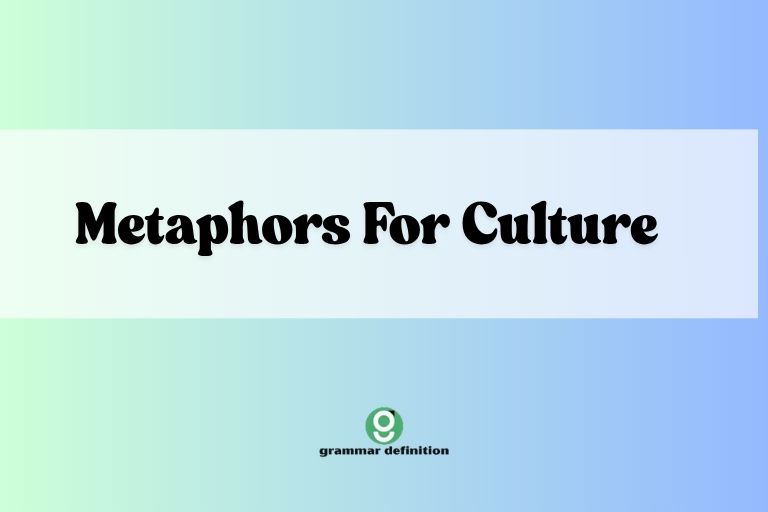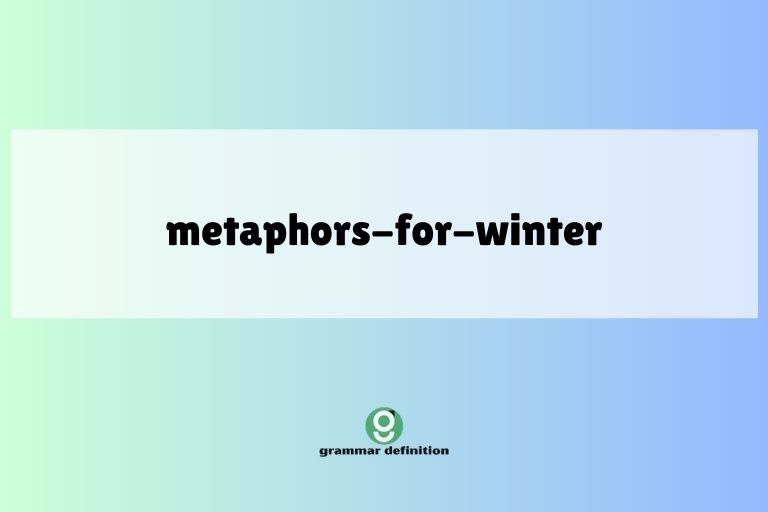Illuminating Language: Mastering Metaphors for Light
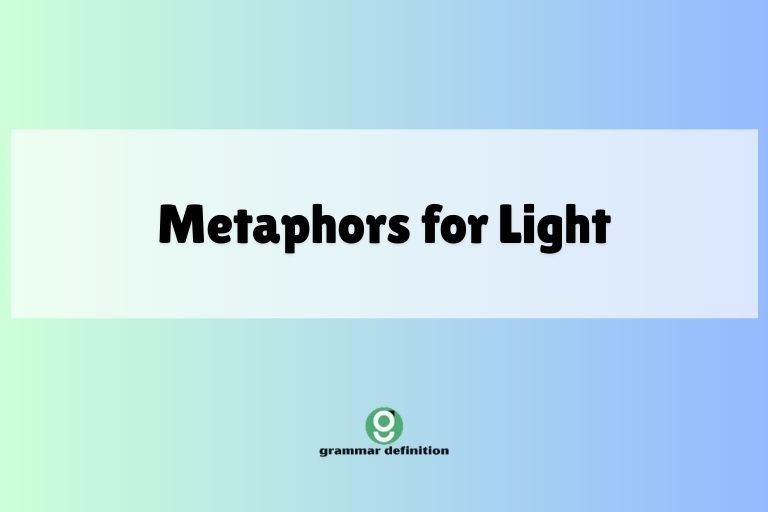
Metaphors are powerful tools in the English language, allowing us to convey complex ideas and emotions by drawing comparisons between seemingly unrelated things. When we use metaphors for light, we tap into a rich vein of symbolism and imagery that can add depth and nuance to our writing and speech.
Understanding these metaphors is crucial for interpreting literature, improving our communication skills, and appreciating the subtle beauty of the English language. This article will delve into the world of metaphors for light, exploring their definitions, structures, types, usage rules, and common mistakes.
Whether you’re a student, a writer, or simply someone who wants to enhance their understanding of English, this guide will illuminate the path to mastering this fascinating topic.
Table of Contents
- Introduction
- Definition of Metaphor for Light
- Classification
- Function
- Contexts
- Structural Breakdown
- Types of Metaphors for Light
- Positive Metaphors
- Negative Metaphors
- Neutral Metaphors
- Examples of Metaphors for Light
- Knowledge and Understanding
- Hope and Inspiration
- Clarity and Truth
- Goodness and Purity
- Life and Energy
- Usage Rules for Metaphors for Light
- Appropriateness
- Consistency
- Originality
- Common Mistakes with Metaphors for Light
- Mixed Metaphors
- Cliches
- Overuse
- Practice Exercises
- Exercise 1: Identifying Metaphors
- Exercise 2: Creating Metaphors
- Exercise 3: Correcting Mistakes
- Advanced Topics
- Extended Metaphors
- Symbolism of Light
- Cultural Variations
- FAQ
- Conclusion
Definition of Metaphor for Light
A metaphor for light is a figure of speech that uses the concept of light to represent something else, typically an abstract idea, emotion, or quality. Light, in its various forms (sunlight, starlight, candlelight, etc.), is often associated with positive attributes such as knowledge, understanding, hope, clarity, and goodness.
Therefore, metaphors for light are frequently employed to convey these positive concepts in a vivid and relatable way. Understanding how these metaphors work involves recognizing the implied comparison between light and the concept it represents.
Classification
Metaphors for light can be classified based on the specific aspect of light being used (e.g., brightness, source, color), the quality being represented (e.g., knowledge, hope), or the overall tone (e.g., positive, negative, neutral). They can also be classified by their complexity, ranging from simple, direct comparisons to more elaborate and nuanced expressions.
The classification helps to analyze the intended meaning and impact of the metaphor.
Function
The primary function of a metaphor for light is to illuminate (pun intended!) an abstract concept by making it more concrete and understandable. By associating an intangible idea with the tangible experience of light, the metaphor makes the idea more accessible to the reader or listener.
Metaphors for light can also evoke emotions, create vivid imagery, and add depth and richness to language. They serve as a powerful tool for persuasion, inspiration, and artistic expression.
Effective use of metaphors for light makes writing more engaging and memorable.
Contexts
Metaphors for light appear in a wide range of contexts, from literature and poetry to everyday conversation and business communication. They are commonly used in religious texts to represent divine enlightenment or spiritual awakening.
In scientific writing, light metaphors can illustrate complex theories or discoveries. In political speeches, they can inspire hope and promise a brighter future.
The specific meaning and impact of a metaphor for light often depend on the context in which it is used, so it is important to consider the surrounding text and the speaker’s or writer’s intentions.
Structural Breakdown
The structure of a metaphor for light typically involves two key elements: the tenor and the vehicle. The tenor is the subject of the metaphor – the abstract idea or quality being represented. The vehicle is the object or concept used to represent the tenor – in this case, light. The metaphor works by highlighting the similarities or shared qualities between the tenor and the vehicle. For example, in the metaphor “her smile was sunshine,” the tenor is “her smile,” and the vehicle is “sunshine.” The shared quality is warmth and brightness.
The effectiveness of a metaphor also depends on the implied connection between the tenor and the vehicle. This connection is often implicit, requiring the reader or listener to make the association themselves.
A strong metaphor will create a clear and compelling connection, while a weak metaphor may be confusing or ineffective. The structure of the sentence or phrase containing the metaphor also plays a role in its impact.
Carefully chosen words and grammatical structures can enhance the vividness and emotional resonance of the metaphor.
Types of Metaphors for Light
Metaphors for light can be categorized based on the emotions or concepts they convey. These categories provide a framework for understanding the different ways in which light can be used metaphorically.
Positive Metaphors
Positive metaphors for light associate light with positive qualities such as hope, joy, knowledge, and understanding. These metaphors are often used to uplift, inspire, or encourage.
Examples include “a beacon of hope,” “a ray of sunshine,” and “the light of knowledge.” These metaphors evoke feelings of optimism, clarity, and enlightenment. They are frequently used in motivational speeches, religious texts, and positive affirmations.
Negative Metaphors
Negative metaphors for light associate light with negative qualities such as exposure, harshness, or superficiality. These metaphors are often used to criticize, warn, or express doubt.
Examples include “blinding light,” “harsh spotlight,” and “false light.” These metaphors evoke feelings of discomfort, vulnerability, and deception. They are frequently used in cautionary tales, critiques of celebrity culture, and expressions of skepticism.
Neutral Metaphors
Neutral metaphors for light simply use light as a descriptive element without necessarily conveying strong positive or negative connotations. These metaphors are often used to provide context or create imagery.
Examples include “casting light on the subject,” “in the light of day,” and “shedding light on the situation.” These metaphors evoke feelings of objectivity, clarity, and observation. They are frequently used in journalistic writing, scientific reports, and objective analyses.
Examples of Metaphors for Light
The following tables provide a comprehensive collection of metaphors for light, categorized by the concepts they represent. Each table includes a variety of examples to illustrate the different ways in which light can be used metaphorically.
Knowledge and Understanding
This table showcases metaphors that use light to symbolize knowledge, understanding, and enlightenment. These metaphors often convey the idea of gaining insight or clarity on a particular subject.
| Metaphor | Meaning |
|---|---|
| The light dawned on me. | I suddenly understood something. |
| She is a beacon of knowledge. | She is a source of great wisdom. |
| He shed light on the problem. | He clarified the issue. |
| The truth illuminated his mind. | He gained a clear understanding of the truth. |
| A spark of understanding ignited in her eyes. | She suddenly grasped the concept. |
| His words cast light on the situation. | His words provided clarity. |
| The lecture was truly enlightening. | The lecture provided great insight. |
| She brought the issue to light. | She revealed the issue. |
| He saw the light. | He finally understood. |
| The teacher illuminated the subject for the students. | The teacher made the subject clear for the students. |
| Her explanation shone a light on the complex theory. | Her explanation made the complex theory understandable. |
| The discovery was a breakthrough, a new light on the horizon. | The discovery was a significant advancement. |
| He sought to enlighten the masses. | He aimed to educate the public. |
| The book was a source of illumination for her. | The book provided her with understanding. |
| The scholar dedicated his life to bringing light to the world. | The scholar dedicated his life to spreading knowledge. |
| The conference was designed to illuminate the latest research. | The conference was designed to highlight the latest research. |
| The detective’s investigation shone a light on the criminal’s activities. | The detective’s investigation revealed the criminal’s activities. |
| The film sought to bring to light the struggles of the marginalized. | The film aimed to reveal the struggles of the marginalized. |
| The professor’s lecture was a guiding light for the students. | The professor’s lecture was a source of direction for the students. |
| The article aimed to shed light on the controversial topic. | The article aimed to clarify the controversial topic. |
| Her insights were like a ray of light in the darkness. | Her insights were very helpful in a difficult situation. |
| The workshop was designed to illuminate the path to success. | The workshop was designed to clarify the path to success. |
| The expert’s analysis shone a light on the hidden flaws. | The expert’s analysis revealed the hidden flaws. |
| The experiment aimed to bring to light the underlying causes. | The experiment aimed to reveal the underlying causes. |
| The mentor served as a guiding light for the young apprentice. | The mentor served as a source of direction for the young apprentice. |
Hope and Inspiration
This table provides examples of metaphors that use light to represent hope, inspiration, and optimism. These metaphors often evoke feelings of positivity and encouragement.
| Metaphor | Meaning |
|---|---|
| She is a ray of sunshine in my life. | She brings joy and happiness to my life. |
| His words were a beacon of hope. | His words inspired optimism. |
| There is a light at the end of the tunnel. | There is hope for a positive outcome. |
| Her spirit shines brightly. | She has a strong and positive attitude. |
| He is a guiding light for many. | He inspires and directs others. |
| The future looks brighter. | The future seems more hopeful. |
| Her smile lit up the room. | Her smile brought joy to the room. |
| He brought light into their lives. | He brought happiness and hope into their lives. |
| The project was a spark of inspiration. | The project ignited creativity. |
| Her kindness shone like a light. | Her kindness was evident and uplifting. |
| The leader’s vision illuminated the path forward. | The leader’s vision provided a clear direction. |
| His encouragement was a beacon in the darkness. | His encouragement provided hope in a difficult time. |
| The artist’s work radiated light and joy. | The artist’s work conveyed positivity and happiness. |
| Her positive attitude was a ray of sunshine to everyone she met. | Her positive attitude brought happiness to everyone she met. |
| The volunteer’s efforts shone a light on the community’s needs. | The volunteer’s efforts highlighted the community’s needs. |
| The music’s uplifting melody was a spark of inspiration for the dancers. | The music’s uplifting melody inspired the dancers. |
| The teacher’s passion for the subject lit a fire in the students’ hearts. | The teacher’s passion for the subject inspired the students. |
| The athlete’s determination shone brightly on the field. | The athlete’s determination was evident and inspiring. |
| The activist’s words were a beacon of hope for the oppressed. | The activist’s words inspired optimism for the oppressed. |
| The inventor’s creation brought light to a world in need. | The inventor’s creation provided solutions to global problems. |
| The charity’s work radiated light and compassion. | The charity’s work conveyed empathy and kindness. |
| Her unwavering faith was a guiding light during challenging times. | Her unwavering faith provided direction and hope during challenging times. |
| The project’s success illuminated the potential for future innovation. | The project’s success highlighted the potential for future innovation. |
| His resilience shone like a beacon, inspiring others to persevere. | His resilience was evident and motivated others to keep going. |
| The community’s collective effort was a spark of inspiration for future endeavors. | The community’s collective effort inspired future projects. |
Clarity and Truth
This table contains metaphors that use light to represent clarity, truth, and honesty. These metaphors often convey the idea of revealing or exposing something that was previously hidden.
| Metaphor | Meaning |
|---|---|
| The investigation brought the truth to light. | The investigation revealed the truth. |
| He saw things in a new light. | He gained a fresh perspective. |
| The evidence shed light on the mystery. | The evidence clarified the mystery. |
| Her honesty shone brightly. | Her honesty was clear and evident. |
| The report illuminated the facts. | The report clarified the facts. |
| His explanation cleared up the fog. | His explanation removed the confusion. |
| The discovery shone a light on the past. | The discovery revealed information about the past. |
| She brought clarity to the situation. | She made the situation clear. |
| The truth dawned on him. | He suddenly realized the truth. |
| His integrity shone like a beacon. | His integrity was evident and trustworthy. |
| The journalist sought to bring the scandal to light. | The journalist aimed to reveal the scandal. |
| The historian’s research illuminated the events of the past. | The historian’s research clarified the events of the past. |
| Her transparency shone brightly, fostering trust among her colleagues. | Her openness was evident and built trust among her colleagues. |
| The investigation shed light on the corruption within the organization. | The investigation revealed the corruption within the organization. |
| The whistleblower’s testimony brought the truth into the light. | The whistleblower’s testimony revealed the truth. |
| The scientist’s findings illuminated the complex workings of the human brain. | The scientist’s findings clarified the complex workings of the human brain. |
| The auditor’s report shone a light on the company’s financial irregularities. | The auditor’s report revealed the company’s financial irregularities. |
| The documentary aimed to bring to light the plight of the refugees. | The documentary aimed to reveal the struggles of the refugees. |
| The philosopher’s arguments illuminated the nature of existence. | The philosopher’s arguments clarified the nature of existence. |
| The judge’s ruling shone a light on the legal complexities of the case. | The judge’s ruling revealed the legal complexities of the case. |
| The professor’s lecture brought clarity to the confusing topic. | The professor’s lecture made the confusing topic clear. |
| The artist’s work illuminated the hidden beauty in everyday life. | The artist’s work revealed the hidden beauty in everyday life. |
| The detective’s intuition shone a light on the suspect’s true motives. | The detective’s intuition revealed the suspect’s true motives. |
| The journalist’s investigation brought the truth to light, despite the risks. | The journalist’s investigation revealed the truth, despite the dangers. |
| The scientist’s discovery illuminated a new path for medical research. | The scientist’s discovery clarified a new direction for medical research. |
Goodness and Purity
This table illustrates metaphors that use light to represent goodness, purity, and virtue. These metaphors often evoke feelings of innocence and moral righteousness.
| Metaphor | Meaning |
|---|---|
| Her heart is pure as sunlight. | Her heart is innocent and virtuous. |
| He is a shining example of integrity. | He is a model of moral uprightness. |
| Her soul radiates light. | She has a kind and compassionate spirit. |
| His actions shone with righteousness. | His actions were morally correct. |
| She is a beacon of virtue in a troubled world. | She is a symbol of goodness in a difficult environment. |
| Her kindness illuminated the lives of those around her. | Her kindness positively impacted the lives of those around her. |
| His purity of heart shone brightly. | His innocence and goodness were evident. |
| The saint’s life was a shining example of faith. | The saint’s life was a model of religious devotion. |
| Her compassion radiated light and warmth. | Her empathy conveyed kindness and comfort. |
| His moral compass was a guiding light in difficult situations. | His strong sense of right and wrong provided direction in challenging times. |
| The child’s innocence shone like a bright light. | The child’s purity was evident and untainted. |
| The humanitarian’s work illuminated the path to a better world. | The humanitarian’s work showed the way to a more just and compassionate world. |
| Her virtuous actions shone brightly, inspiring others to follow her example. | Her morally correct actions were evident and motivated others to emulate her. |
| His noble spirit radiated light and hope. | His honorable character conveyed optimism and encouragement. |
| The charity’s mission was a beacon of goodness in the community. | The charity’s purpose was a symbol of virtue in the local area. |
| Her altruism illuminated the lives of countless individuals. | Her selflessness positively impacted the lives of many people. |
| His unwavering integrity shone brightly, earning him the respect of his peers. | His steadfast moral uprightness was evident and gained him the admiration of his colleagues. |
| The hero’s courage was a shining example of selflessness. | The hero’s bravery was a model of putting others before oneself. |
| Her pure intentions radiated light and sincerity. | Her honest motives conveyed genuineness and trustworthiness. |
| His virtuous character was a beacon of hope for the future. | His morally sound personality was a symbol of optimism for the generations to come. |
| The organization’s ethical practices shone brightly in the industry. | The organization’s moral standards were evident and commendable in the field. |
| Her dedication to justice illuminated the path to equality. | Her commitment to fairness showed the way to a more equitable society. |
| His benevolent actions radiated light and compassion, improving countless lives. | His kind deeds conveyed empathy and kindness, enhancing the well-being of many people. |
| The foundation’s philanthropic work was a shining example of generosity. | The foundation’s charitable activities were a model of giving back to the community. |
| Her selfless service illuminated the needs of the less fortunate. | Her altruistic work revealed the challenges faced by the disadvantaged. |
Life and Energy
This table presents metaphors that use light to represent life, energy, and vitality. These metaphors often evoke feelings of dynamism and vibrancy.
| Metaphor | Meaning |
|---|---|
| Her eyes sparkled with life. | Her eyes were full of energy and vitality. |
| He has a bright spark. | He is full of energy and enthusiasm. |
| The city lights throbbed with life. | The city was alive with activity. |
| She is a vibrant light in a dull world. | She brings energy and excitement to a boring environment. |
| His passion burned brightly. | His enthusiasm was intense and unwavering. |
| The music electrified the crowd. | The music filled the crowd with energy. |
| Her laughter lit up the room. | Her laughter brought joy and energy to the room. |
| His spirit shone with youthful energy. | His personality radiated vitality and enthusiasm. |
| The dancer’s movements were electric, filled with grace and power. | The dancer’s movements were dynamic and captivating. |
| Her creativity sparked new ideas and innovations. | Her imagination ignited fresh concepts and advancements. |
| The athlete’s performance shone brightly on the field, captivating the audience. | The athlete’s performance was outstanding and engaging. |
| His enthusiasm for the project sparked a wave of excitement among the team members. | His passion for the project ignited a surge of energy among the team members. |
| The artist’s vibrant colors radiated life and energy. | The artist’s lively hues conveyed vitality and dynamism. |
| Her dynamic personality lit up every room she entered. | Her energetic character brought vibrancy to every space she occupied. |
| The entrepreneur’s vision shone brightly, inspiring others to join the venture. | The entrepreneur’s foresight was compelling and motivated others to participate in the project. |
| His passion for music electrified the audience, creating an unforgettable experience. | His enthusiasm for music energized the audience, resulting in a memorable event. |
| The community’s collective effort sparked a renewed sense of vitality. | The community’s combined work ignited a fresh feeling of energy. |
| Her innovative ideas shone brightly, leading to significant advancements in the field. | Her original concepts were outstanding, resulting in substantial progress in the area. |
| The speaker’s words sparked a fire in the hearts of the listeners. | The speaker’s words ignited passion in the minds of the audience. |
| His vibrant spirit radiated energy and enthusiasm, inspiring those around him. | His lively personality conveyed vitality and passion, motivating those near him. |
| The project’s success shone a light on the team’s dedication and hard work. | The project’s achievement highlighted the team’s commitment and effort. |
| Her artistic talent sparked a wave of creativity in the community. | Her creative ability ignited a surge of imagination in the local area. |
| His leadership shone brightly, guiding the team through challenging times. | His guidance was outstanding, leading the team through difficult periods. |
| The festival’s vibrant atmosphere electrified the city, bringing people together in celebration. | The festival’s lively environment energized the city, uniting people in festivity. |
| Her passion for learning sparked a lifelong quest for knowledge. | Her enthusiasm for education ignited a continuous pursuit of understanding. |
Usage Rules for Metaphors for Light
Using metaphors effectively requires careful consideration of several factors. Here are some key rules to keep in mind when using metaphors for light.
Appropriateness
Ensure that the metaphor is appropriate for the context and audience. Consider the tone and purpose of your writing or speech.
A metaphor that is effective in one situation may be inappropriate in another. For example, a light-hearted metaphor may not be suitable for a serious or somber occasion.
Consistency
Maintain consistency within your metaphors. Avoid mixing metaphors that create contradictory or confusing images.
If you start with a light metaphor, stick with it throughout the passage. Mixing metaphors can weaken your writing and distract your audience.
For example, don’t say “He’s a guiding light who’s also drowning in a sea of troubles.”
Originality
Strive for originality in your metaphors. Avoid using clichéd or overused metaphors, as they can lack impact and fail to engage your audience.
Instead, try to create fresh and imaginative comparisons that will capture the reader’s attention. A unique metaphor can make your writing more memorable and impactful.
Common Mistakes with Metaphors for Light
Several common mistakes can undermine the effectiveness of metaphors for light. Being aware of these pitfalls can help you avoid them.
Mixed Metaphors
Mixing metaphors involves combining two or more incompatible metaphors, creating a confusing or nonsensical image. This often occurs when the writer or speaker is not careful about the logical connections between the metaphors. Incorrect: “He’s a shining star who’s also climbing the walls.” Correct: “He’s a shining star in the company.”
Cliches
Using clichéd metaphors can make your writing seem unoriginal and uninspired. Cliches are overused expressions that have lost their impact. Incorrect: “She’s a ray of sunshine.” Correct: “Her optimism was a warm glow on a cloudy day.”
Overuse
Overusing metaphors can make your writing seem forced and unnatural. Use metaphors sparingly and strategically, only when they add significant value to your message.
Too many metaphors can overwhelm the reader and detract from the core message. Instead of saying “His words were a guiding light, illuminating the dark path and shining brightly on the future,” try saying “His words provided clear direction and inspired hope for the future.”
Practice Exercises
Test your understanding of metaphors for light with the following exercises.
Exercise 1: Identifying Metaphors
Identify the metaphors for light in the following sentences:
| Question | Answer |
|---|---|
| 1. The truth dawned on him after years of searching. | dawned on him |
| 2. She is a beacon of hope for the refugees. | beacon of hope |
| 3. His words shed light on the complex issue. | shed light |
| 4. Her smile lit up the room. | lit up |
| 5. He is a guiding light for his students. | guiding light |
| 6. The investigation brought the scandal to light. | brought…to light |
| 7. The scientist’s discovery illuminated a new path for research. | illuminated a new path |
| 8. Her honesty shone brightly, earning her the trust of her colleagues. | shone brightly |
| 9. The athlete’s determination was a beacon of inspiration for the team. | beacon of inspiration |
| 10. The artist’s vibrant colors radiated life and energy. | radiated life and energy |
Exercise 2: Creating Metaphors
Create metaphors for light to describe the following concepts:
| Concept | Example Metaphor |
|---|---|
| Joy | Joy is a burst of sunlight on a rainy day. |
| Wisdom | Wisdom is the steady beam of a lighthouse. |
| Inspiration | Inspiration is a spark that ignites creativity. |
| Truth | Truth is a clear light that reveals hidden things. |
| Courage | Courage is a flame that burns brightly in the face of fear. |
| Resilience | Resilience is the light that guides us through the darkest times. |
| Innovation | Innovation is a spark that ignites progress. |
| Empathy | Empathy is a light that illuminates the experiences of others. |
| Integrity | Integrity is the steady beam that guides ethical behavior. |
| Kindness | Kindness is a warm light that brings comfort to those in need. |
Exercise 3: Correcting Mistakes
Identify and correct the mistakes in the following sentences:
| Question | Corrected Sentence |
|---|---|
| 1. He is a shining star who’s also drowning in a sea of troubles. | He is a shining star in the company. |
| 2. Her smile was a ray of sunshine, but she was also a dark cloud. | Her smile was a ray of sunshine, bringing joy to everyone around her. |
| 3. The project was a guiding light, but it also hit a brick wall. | The project was a guiding light, providing direction and hope for the team. |
| 4. His words shed light on the situation, but they also muddied the waters. | His words shed light on the situation, clarifying the complex issues. |
| 5. She is a beacon of hope, but she also has a dark cloud hanging over her head. | She is a beacon of hope, inspiring others with her positive attitude. |
| 6. The truth was a ray of sunshine, but it also rained on
our parade. |
The truth was a ray of sunshine, bringing clarity and understanding. |
| 7. His ideas were a spark of inspiration, but they also fell flat. | His ideas were a spark of inspiration, igniting creativity among the team. |
| 8. Her guidance was a guiding light, but it also led us into a maze. | Her guidance was a guiding light, providing clear direction and support. |
| 9. The discovery shone a light on the issue, but it also opened a can of worms. | The discovery shone a light on the issue, revealing important new information. |
| 10. His honesty shone brightly, but it also ruffled some feathers. | His honesty shone brightly, earning him the respect of his colleagues. |
Advanced Topics
For those looking to delve deeper into the world of metaphors for light, here are some advanced topics to explore.
Extended Metaphors
An extended metaphor is a metaphor that is developed over several lines or even throughout an entire work. It allows for a more complex and nuanced comparison between the tenor and the vehicle.
In the context of light, an extended metaphor might explore the different facets of light (e.g., brightness, color, source) to represent various aspects of a concept or idea. For example, a novel might use the metaphor of a lighthouse to represent hope, exploring the different ways in which the lighthouse guides and protects those at sea.
The extended metaphor adds depth and richness to the writing, creating a more lasting impression on the reader.
Symbolism of Light
Light has been a powerful symbol throughout history and across cultures. Understanding the different symbolic meanings of light can enhance your appreciation of metaphors for light.
In many cultures, light represents knowledge, truth, and goodness, while darkness represents ignorance, falsehood, and evil. Light can also symbolize hope, renewal, and spiritual enlightenment.
Different types of light (e.g., sunlight, moonlight, starlight) may have different symbolic associations. Exploring the symbolism of light can provide valuable insights into the cultural and historical context of metaphors for light.
Cultural Variations
The use and interpretation of metaphors for light can vary across different cultures. Some cultures may have unique associations with light that are not shared by others.
For example, certain colors of light may have specific symbolic meanings in different cultures. Additionally, the cultural context can influence the types of metaphors that are commonly used.
It is important to be aware of these cultural variations when using or interpreting metaphors for light, especially in cross-cultural communication. Understanding these nuances can help you avoid misunderstandings and communicate more effectively.
FAQ
What is the difference between a metaphor and a simile?
A metaphor directly equates two unlike things, whereas a simile uses “like” or “as” to make a comparison. For example, “She is a ray of sunshine” is a metaphor, while “She is like a ray of sunshine” is a simile.
How can I avoid using clichéd metaphors?
To avoid clichés, try to think of fresh and original comparisons that are specific to the context. Consider the unique qualities of the subject you are describing and look for less obvious connections.
What makes a metaphor effective?
An effective metaphor creates a clear and compelling connection between the tenor and the vehicle, evokes emotions, and adds depth and richness to the language. It should also be appropriate for the context and audience.
Can metaphors for light be used in negative contexts?
Yes, metaphors for light can be used in negative contexts to represent qualities such as exposure, harshness, or superficiality. Examples include “blinding light” and “harsh spotlight.”
How do I identify mixed metaphors?
Mixed metaphors combine two or more incompatible metaphors, creating a confusing or nonsensical image. To identify them, look for contradictory or illogical connections between the metaphors.
Conclusion
Metaphors for light are a powerful and versatile tool for enhancing communication and artistic expression. By understanding their definitions, structures, types, usage rules, and common mistakes, you can effectively use metaphors for light to illuminate your ideas, evoke emotions, and engage your audience.
Whether you are a student, a writer, or simply someone who wants to improve their understanding of English, mastering metaphors for light will undoubtedly brighten your linguistic landscape.

